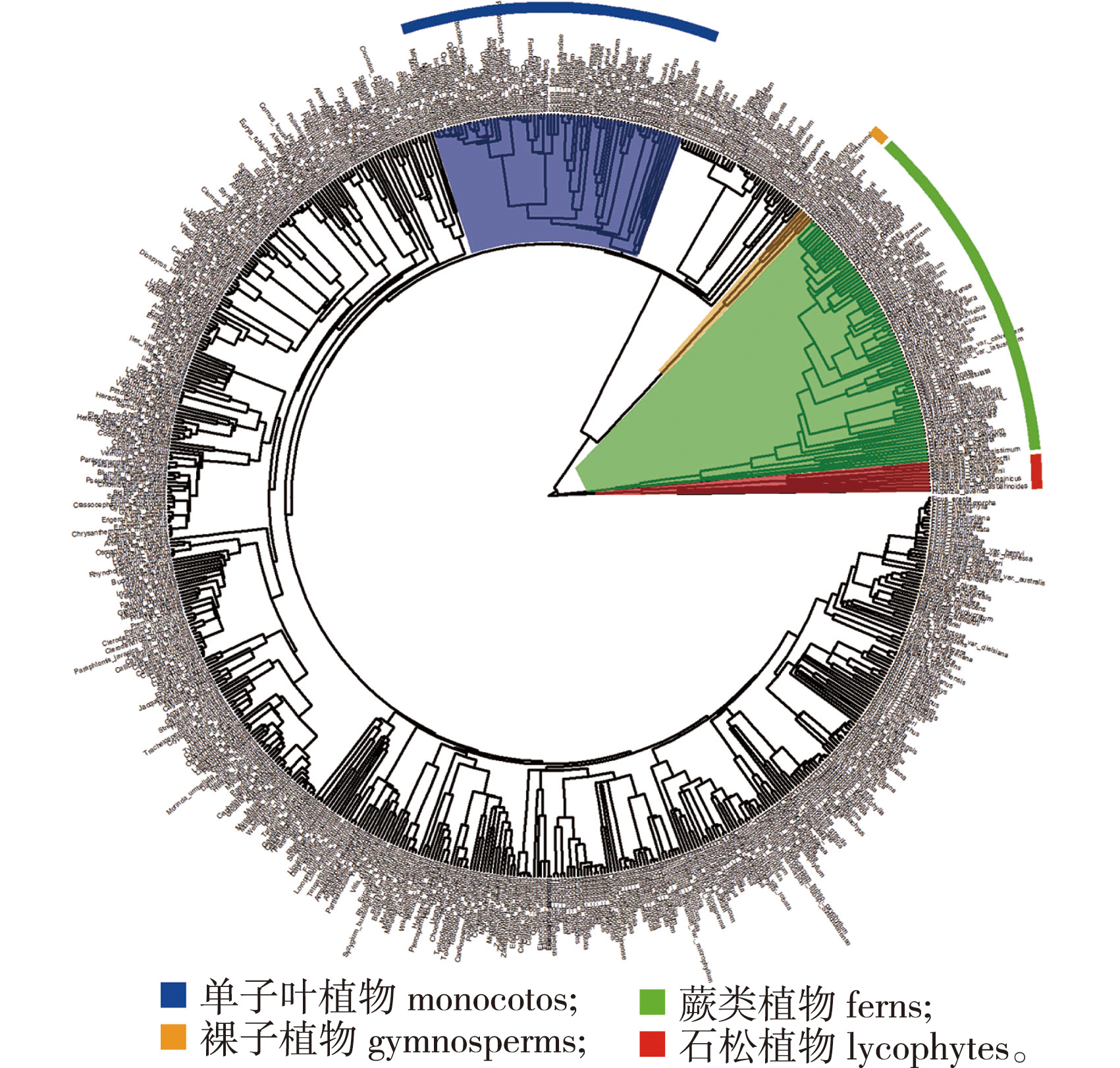【目的】杉木(Cunninghamia lanceolata)人工林作为中国亚热带地区最重要的生态系统形式与木材来源之一,其群落构建的过程对于解释人工林物种共存与生物多样性的维持至关重要。本研究旨在揭示中国亚热带杉木人工林群落的构建过程及其机制,为杉木人工林在经营过程中提升局域生物多样性的稳定提供理论基础。【方法】通过文献检索和野外抽样调查,收集了中国亚热带地区林龄跨度较大(3~100 a)的143个杉木人工纯林的样方数据。根据群落系统发育结构随种植时间、胸径的变化趋势,探究环境过滤、竞争排斥和随机过程在林分发育过程中的变化。【结果】整体上,杉木人工林随着林龄的增加,植物群落的净种间亲缘关系指数(NRI)和净最近种间亲缘关系指数(NTI)均表现为先降低后平缓,系统发育结构由聚集转为随机后最终趋向于发散。这一过程NRI比NTI变化更显著:在幼龄林前期阶段,NRI和NTI均大于0、系统发育结构表现为聚集;随后在林分成熟前,NRI < 0, NTI > 0,在群落整体水平上表现为发散,而在进化树末端上表现为聚集;在林分成熟后,NRI和NTI均小于0,系统发育结构表现为发散。系统发育结构随胸径的变化趋势与林龄基本一致。【结论】随着林分生长发育,亚热带杉木人工林群落构建主要动力由环境过滤,经过一段随机作用,最终由生物间相互作用主导。对于不同林龄阶段采取合理的营林措施有利于杉木人工林局域物种共存和植物多样性的维持。
【Objective】 The process of community establishment in Chinese fir (Cunninghamia lanceolata) artificial forest, as one of the most significant ecosystems and sources of timber in China’s subtropical regions, is crucial for understanding the coexistence of species and the maintenance of biodiversity in plantation forests. The objective of this study is to investigate the process of community assembly and underlying mechanisms of Chinese fir artificial forests in Chinese subtropical, and provide a theoretical basis for enhancing the stability of local biodiversity in the management of Chinese fir artificial forests. 【Method】 Data from 143 pure Chinese fir artificial forests with a wide age range (3-100 years old) in subtropical China were collected through literature search and field sampling surveys. The changes in community phylogenetic structure with forest age and breast height diameter were examined to explore the variations in environmental filtration, competitive exclusion, and stochastic processes during stand development. 【Result】 Overall, as the forest age increased, the net relatedness index (NRI) and net taxon index (NTI) of plant communities in Chinese fir artificial forests initially decreased and then leveled off. The phylogenetic structure transitioned from aggregation to stochastic processes and eventually tended to diverge. The changes in NRI were more significant than those in NTI. In the early stage of young stands, NRI and NTI were both higher than 0, indicating aggregation in the phylogenetic structure. Before stand maturity, NRI was lower than 0, and NTI was higher than 0, showing divergence at the community level and aggregation at the end of the evolutionary tree. After stand maturity, both NRI and NTI were lower than 0, indicating a divergent phylogenetic structure. The trend of phylogenetic structure with diameter at breast height (DBH) was consistent with stand age. 【Conclusion】 The community assembly of Chinese fir artificial forests is primarily driven by environmental filtration, followed by a period of stochastic processes, and ultimately dominated by inter-biotic interactions as the forest stand grows and develops. Implementing appropriate forest management measures for different stand ages is beneficial for the coexistence of local species and the maintenance of plant diversity in Chinese fir artificial forests.
 PDF(2727 KB)
PDF(2727 KB)


 PDF(2727 KB)
PDF(2727 KB)
 PDF(2727 KB)
PDF(2727 KB)
